It is the late period for deer hunting now and things can sure get tougher. In fact, things can even get tougher than they were during the regular firearm deer hunting season. After all, the rigors of the rut are pretty much over.
But don’t put away your gear! Hear me out.
I want to use a football analogy that many of you who hunt deer will understand when it comes to the late-season.
For a football team, it is often necessary for coaches to make adjustments to their game plan at halftime.
If the defensive backs are locked in on the receivers every play, consideration is given to a few quick-hitters into the line by the running backs. Conversely, if the defensive linemen are clogging up the middle expecting a run, it’s time to air it out to receivers.
By the same token, as deer hunting seasons reach their final weeks, it’s often necessary for hunters to adjust their game plans. Why? Because if hunters don’t figure out what’s happening and adjust, the opportunities for venison on the dinner table are greatly diminished.
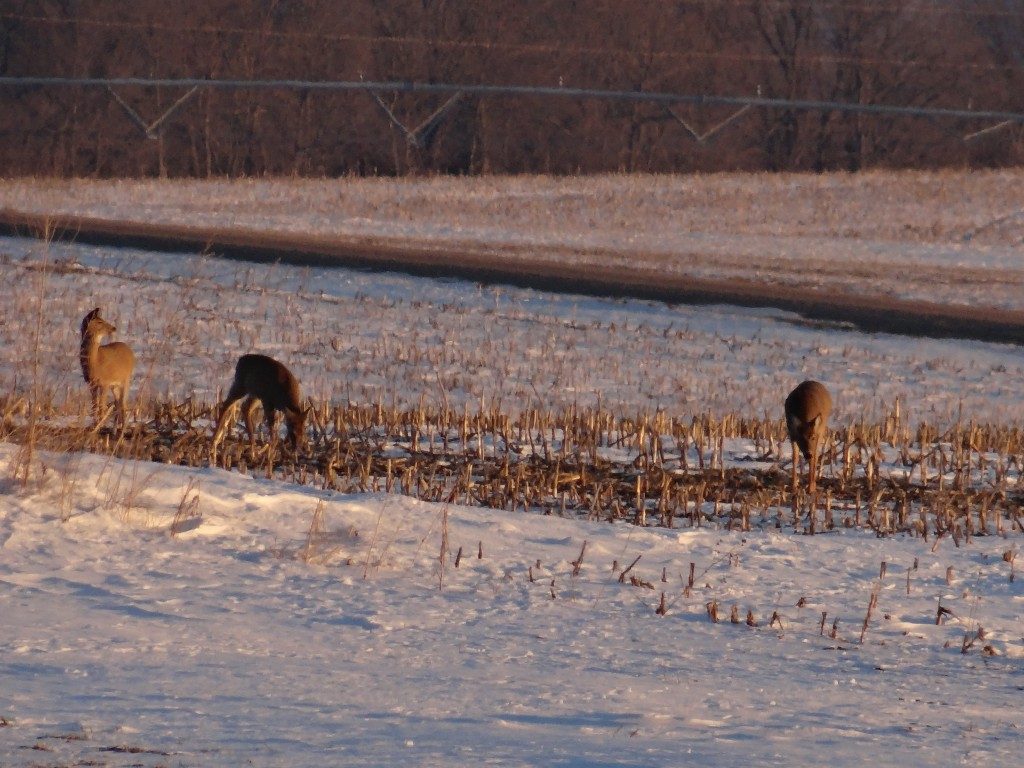
Late-season deer hunting does mean it’s time to rethink strategy and tactics. And, it means paying special attention to details. It also means keeping your trail cameras rolling, glassing from interior farm/ranch roads or high vantage points and watching from various stands or blinds in order to get a handle on deer numbers and movement.
Luke Meduna, the Nebraska Game and Parks Commission’s Big Game Program Manager, had this conservation-based message to relay to late-season deer hunters: “I would just remind hunters to recognize the role they play in deer management. Within regulations and permit requirements, hunters need to know they can increase, stabilize, or reduce deer populations by altering the number and sex of deer that they harvest.”
Here are some tips to improve the odds for late-season deer hunting success, plus some clothing guidelines, several regulation reminders and information on a few special deer hunting programs.
WEATHER FRONTS AND BAROMETER. Weather fronts, and particularly weather-makers, seem to significantly affect deer movement in the late season. Deer will feed heavily a day or two prior to the arrival of a cold front, and then for a couple days after one. When the barometer starts dropping and heavy snow, cold rain or ice threatens to cover their primary food source, the instinctual need of deer to feed shifts into high gear.
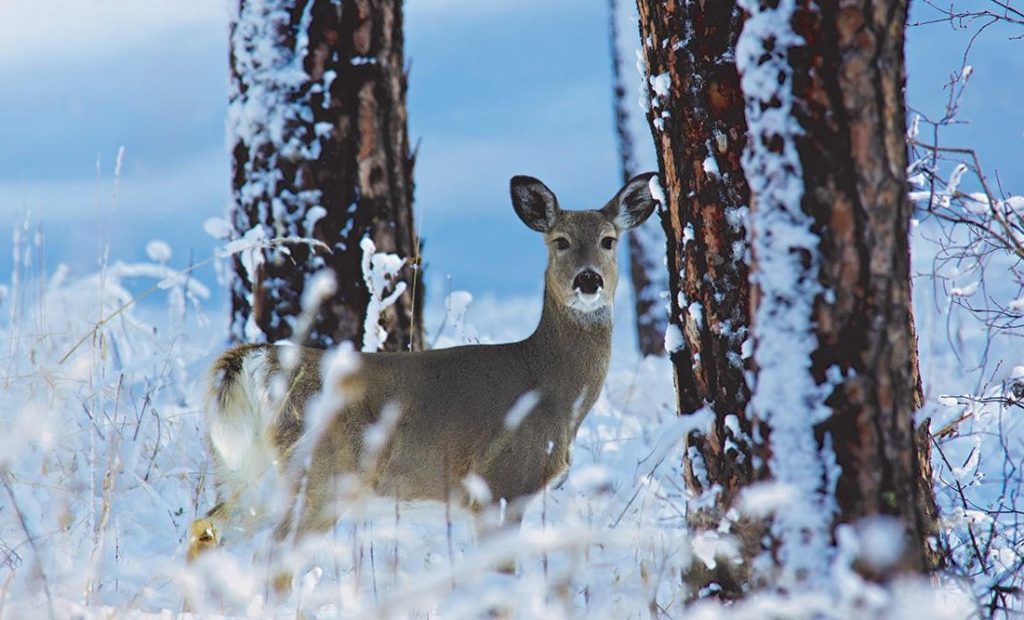
SNOW COVER. Snow cover brings many advantages to the late season deer hunter. The most obvious advantage of snow cover is that anything moving in it must leave tracks or droppings. Deer sign is much easier to see, follow, and interpret when made in the snow. Deer are also more readily seen on the hunt. Keep in mind the timing of the snow tells you how recently the deer came through an area. Strategically placed game cameras can be of further value to pattern deer in the snow.
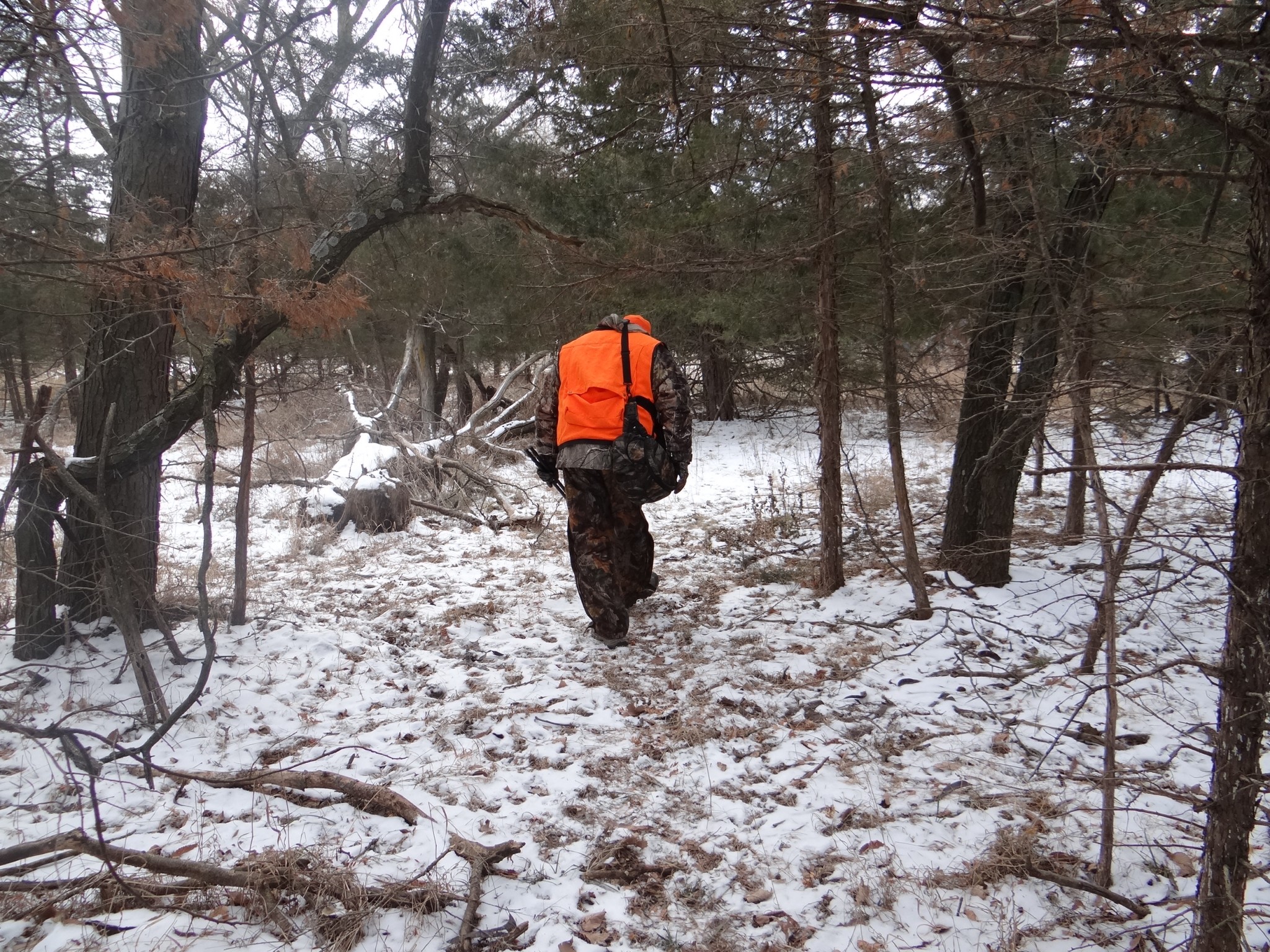
LATE AFTERNOONS. The early morning hours around sunrise can be downright frigid. White-tailed deer realize they can conserve body heat by waiting to move to feeding areas until the afternoon. Hunt those late afternoon hours until the end of legal shooting time (30 minutes after sunset).
WARM DAYS. On warm days, deer simply do not move much as much as normal. In fact, when temperatures climb well above average in the late season and dryness prevails, a variety of food sources may be consumed by deer. Don’t overlook some of those ‘green’ food sources on the stalk or stem to hunt over such as winter wheat. Grassy cover with some ‘green’ undergrowth should not be overlooked. In addition, finding a water source that does not freeze and is near a bedding area may prove to be productive. During late afternoon sessions, be prepared for deer to emerge from cover onto crop fields in the last 10 minutes or so of legal shooting time.
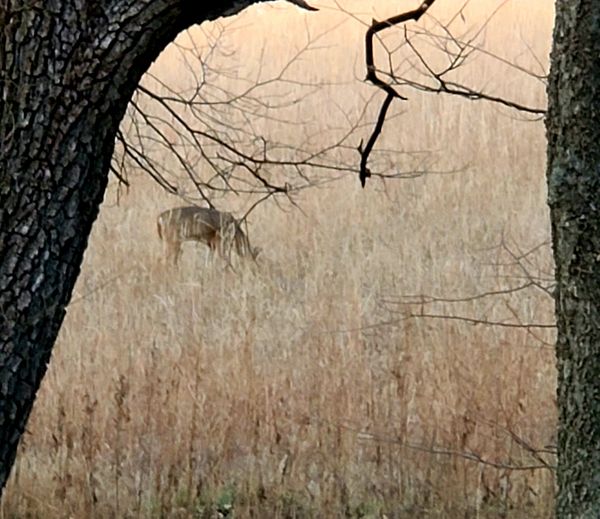
FOOD. White-tailed deer need to eat lots of high-carbohydrate, high-energy foods in winter — everything from corn to acorns in order to maintain body heat. So, find the food source deer are consistently using and the active trails leading to these major food sources. Spontaneous set ups can work well. Play the wind and position yourself accordingly in a tree stand or ground blind for a good, safe shot.
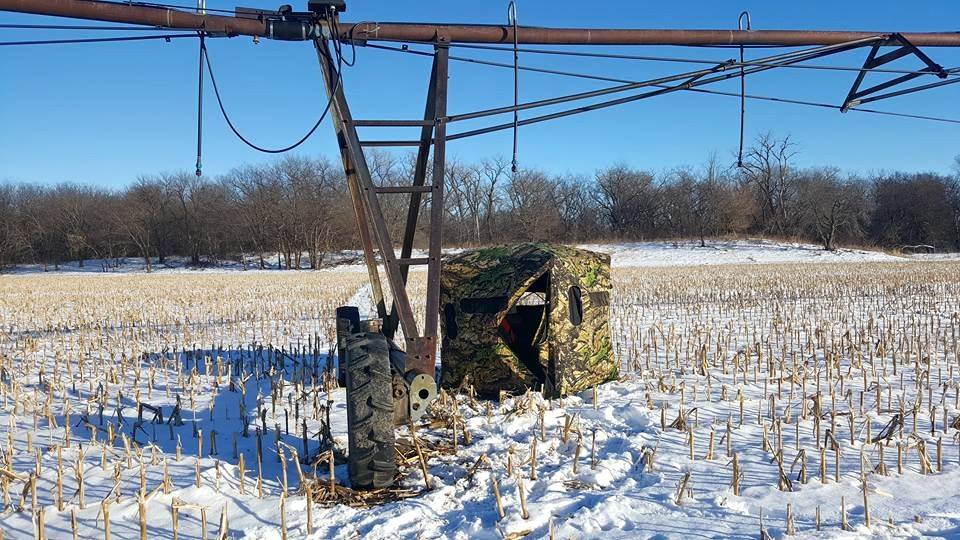
HIGH WINDS. High winds certainly make deer more apprehensive and warier. As leafage and vegetation flutters, this confuses the deer’s sight and its ability to hear and distinguish scent, making it anxious. With higher wind velocities in the winter, hunters need to find places where deer can get out of the howling winds such as a ditch, gully, ravine, sheltered creek bottom or the lowest side of a hill. Deer like to travel through or utilize these terrain features when there are high winds blowing because they can more effectively use their senses and feel safer, more secure. It is good practice for late season hunters to note these spots when the winds seem to be at gale force!

BEDS. To pinpoint bedding areas for deer without spooking them, carefully check the south-facing slopes or any areas facing south. These locations tend to be warmer than others as they are most exposed to the sun and offer protection from the bitterly cold north winds. Thermal cover such as dense woods, thickets and patches of cedars can be quite appealing to white-tailed deer during extremely cold weather, too. Does tend to prefer these types of bedding areas in the wintertime, and where there are does, there are typically bucks.
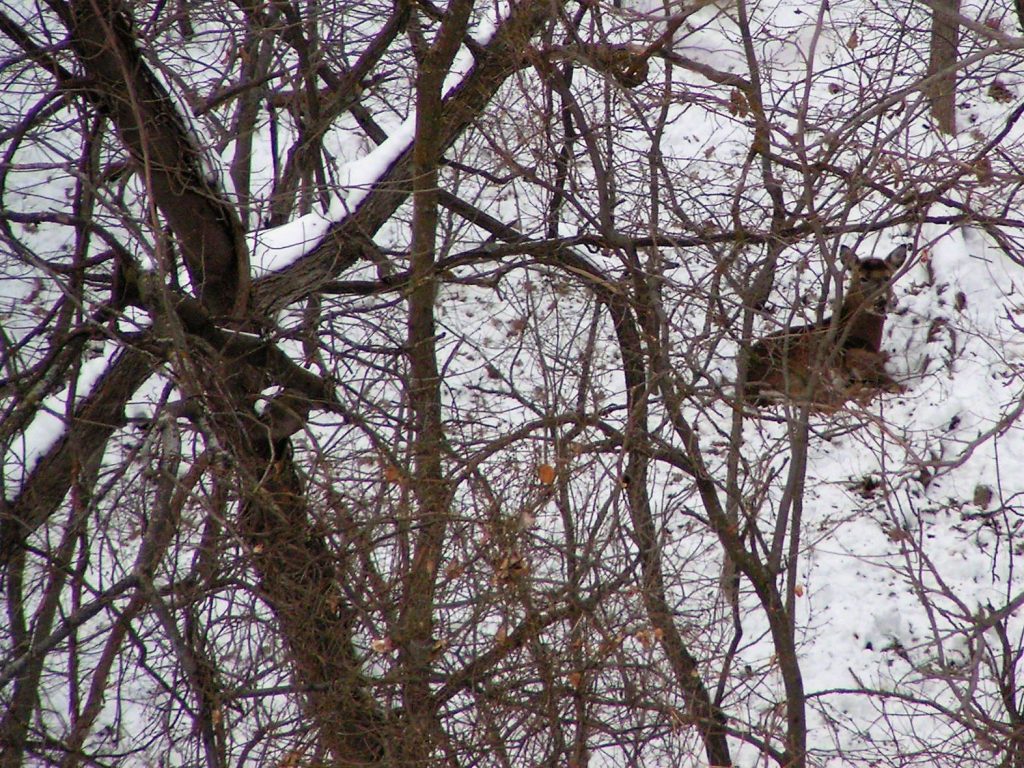
STRETCHING THEIR LEGS. Believe it or not, white-tailed deer in winter periodically leave their beds during the day to stretch their legs, relieve themselves, groom and even browse a bit. Make it a point to locate these pathways or trails being utilized to and from these secluded bedding areas.
TARGETING DOES. Primarily in the late (firearm) deer hunting season, white-tailed does are the intended target of hunters for deer management purposes. It is recommended that hunters use the best binoculars or optics that are available to them to identify does. Keep in mind that an adult white-tailed doe has a long, rectangular body with a bottle-shaped profile and a round head. Also, does normally are wary and appear nervous.
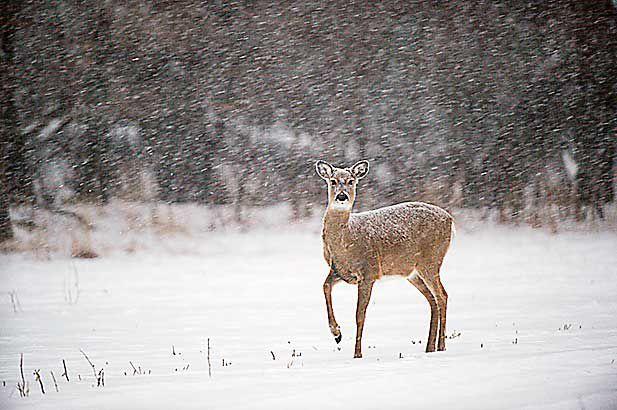
BE QUIET. Noises carry further in the leafless cold weather of late-season deer hunting. A conversation by the truck, bolts on rifles clicking, tree stands creaking and boots crunching in crusty snow are all examples of what is heard at much greater distances this time of year. So be as quiet as possible, take your time, go slow and be stealthy getting to your stand or blind.
CLOTHING GUIDELINES AND HEATER. The key to keeping warm in winter is layering — specifically, clothing that can be added or subtracted depending on weather conditions. Perspiration is the enemy. High-quality wool garments should be considered in the layering approach. Cover exposed skin to prevent frostbite. Keep the head warm by wearing a neck gaiter, a windproof stocking cap with a face mask, and a hood if the windchill is below zero. To keep the hands and feet warm on cold-weather hunts, use chemical or electrical warmers. A seat pad, either foam or gel-style, is also a good idea for late season deer hunting as it maintains a dry barrier between you and a cold, wet seat. Small, portable propane heaters in ground blinds and elevated box blinds with proper ventilation also work well for overall body warmth!
THE SEASONS. Nebraska’s archery and muzzleloader deer hunting seasons continue through December 31st. The late firearm deer hunting season for antlerless deer opens January 1st and runs through January 15th. In the River Antlerless Season, the dates are Jan.1-31. Specifics on the seasons can be found by reading the current 2023 Nebraska Big Game Hunting Guide publication available at OutdoorNebraska.gov
REGULATION REMINDERS. Late-season deer hunters are reminded of four important things when it comes to regulations. First, nearly all deer hunters in Nebraska are required to have a habitat stamp in addition to their signed deer permit. Second, at a minimum, 400 square inches of blaze orange clothing (a blaze orange cap and vest) must be worn by muzzleloader and late (firearm) season deer hunters to be seen for safety purposes. Third, before field dressing a harvested deer, the first action that a deer hunter must do is to “cancel” their permit by following the instructions that are listed on the permit. And fourth, with archery, muzzleloader and late (firearm) season deer hunting, the Telecheck system has to be used to legally check in a harvested deer.

SPECIAL DEER HUNTING PROGRAMS. Aside from the regulations, late-season deer hunters need to know that it is not too late to get involved in special deer programs. A couple that assist people in need of healthy protein or who would like to have some tasty venison for the dinner table are Hunters Helping the Hungry and the Deer Exchange. Both are worthwhile Game and Parks Commission programs available to deer hunters where they can gift deer. For particulars about them, go to the hyperlinks that are highlighted.
There is also the Nebraska Antlerless Hunter Database that late-season deer hunters may want to check out, too. This database connects hunters who want to harvest antlerless deer with landowners who are experiencing damage issues from deer on their property. To be considered for the program, hunters need to enter their information at this link.
Don’t forget to consider taking a new deer hunter in your family or friend network to the field with you. Remember someone took you!
I hope these tips aid you in your late season deer hunting activities.
Bundle up, be safe, enjoy the adventure and make wonderful memories!

The post Tips for Late-Season Deer Hunting in Nebraska appeared first on Nebraskaland Magazine.
















